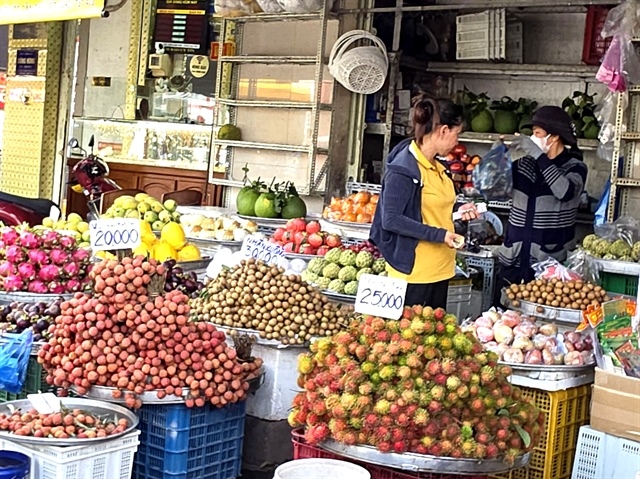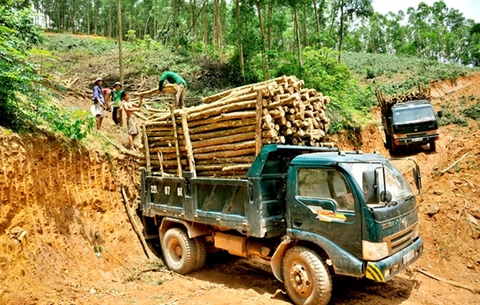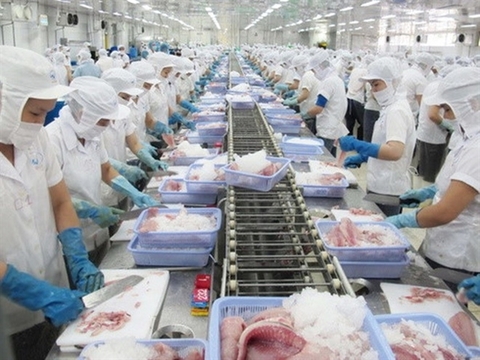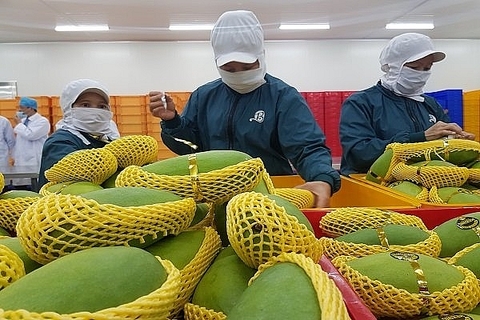Son La mangoes exported to demanding markets
Son La mangoes exported to demanding markets
Mangoes grown in Yen Chau District, the northern mountain province of Son La, began being exported to the US, UK, Australian and Chinese markets on Saturday.
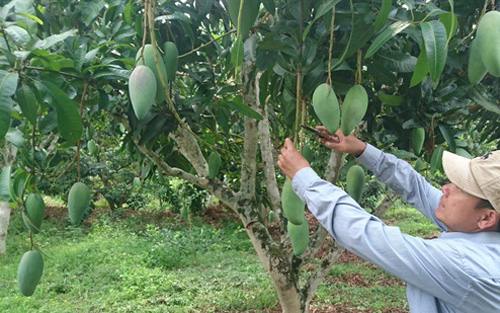
Speaking at a ceremony to announce the export of its speciality to the four key markets, provincial party secretary Hoang Van Chat said the event would help promote Son La mangoes in other markets around the world.
This is the first time Son La mangoes have been exported to the US and UK, two selective markets with strict criteria.
The ceremony was held as part of the Yen Chau Mango Festival 2019.
The province sold 15,000 tonnes of mangoes in the first five months of the year. The export volume was more than 2,500 tonnes.
With about 15,700ha of mango farms, output is expected to reach about 35,500 tonnes this year, of which the volume eligible for export will be more than 7,500 tonnes. These numbers mark significant growth compared to 2018.
Son La is the fifth locality in the country following Dong Thap, Vinh Long, An Giang and Tien Giang and the first in the north to export mangoes to these high potential markets.
Vietnamese mangoes have been exported to 40 countries and territories worldwide, including Japan, South Korea, Taiwan (China), the EU, Australia, the US, the UK and Canada. It is the sixth fruit of Viet Nam to be exported to the US, after dragon fruit, rambutan, longan, lychee and star apple.
Yen Chau Mango Festival 2019 was held from May 31 to June 2 with booths introducing local agricultural and handicraft products, as well as various activities including a mango harvesting contest.
Agricultural trade
The agriculture sector gained a trade surplus of US$3.3 billion in the first five months of this year, according to the Ministry of Agriculture and Rural Development.
The nation achieved an export value of $16.1 billion from agricultural, forestry and aquatic products during the period, a year-on-year increase of 1.2 per cent, including $3.6 billion in May.
The sector spent $12.8 billion on agricultural, forestry and fishery imports in the first five months, up 2.1 per cent over the same period last year. Of which, imports of fertilisers, pesticides and key agricultural products reached about $10.8 billion, up by 2.7 per cent year-on-year.
However, the key agricultural product exports were estimated at $7.7 billion, down 9.5 per cent over the same period.
The ministry said the export value of agricultural, forestry and fishery products increased again after slowing since the beginning of this year compared to 2018 due to Chinas policy changes and the impact of the US-China trade war, the Vietnam News Agency reported.
Minister of Agriculture and Rural Development Nguyen Xuan Cuong said competition had grown this year, reported baodautu.vn.
In 2018, many countries had to import rice, including China, pushing the average export price of Vietnamese rice to $436 per tonne, it's highest level ever.
Other agricultural products as well as fishery and vegetable products had faced a similar situation, he said, and many countries had applied new technologies in production to become export rather than import markets.
This had created fiercer competition in the global market, Cuong said.
According to the ministry, in the first five months of this year, rubber exports were up 2.4 per cent to $662 million, tea was up 30 per cent to $79 million and fruit and vegetables climbed 10.3 per cent to $1.8 billion.
Some commodities, however, suffered a drop in export value such as pepper (down 26 per cent), cashew nuts (down 21 per cent), coffee (down 10 per cent) and rice (down 15 per cent) despite increased export volume.
Cashews surged 7.9 per cent in export volume but was down 14.9 per cent in value to $1.2 billion, and pepper increased 33.2 per cent in export volume but fell 2.4 per cent in value to $372 million.
Seafood exports were estimated at $3.15 billion, down slightly from the same period last year, including $795 million from tra fish exports and $1.1 billion from shrimp exports.
Forest product exports maintained high growth at 19.6 per cent to $4.3 billion.
According to the ministry, the results of agricultural production in the first five months showed that there were many difficulties in implementing the sectors growth target this year, especially with the spread of African swine fever.





